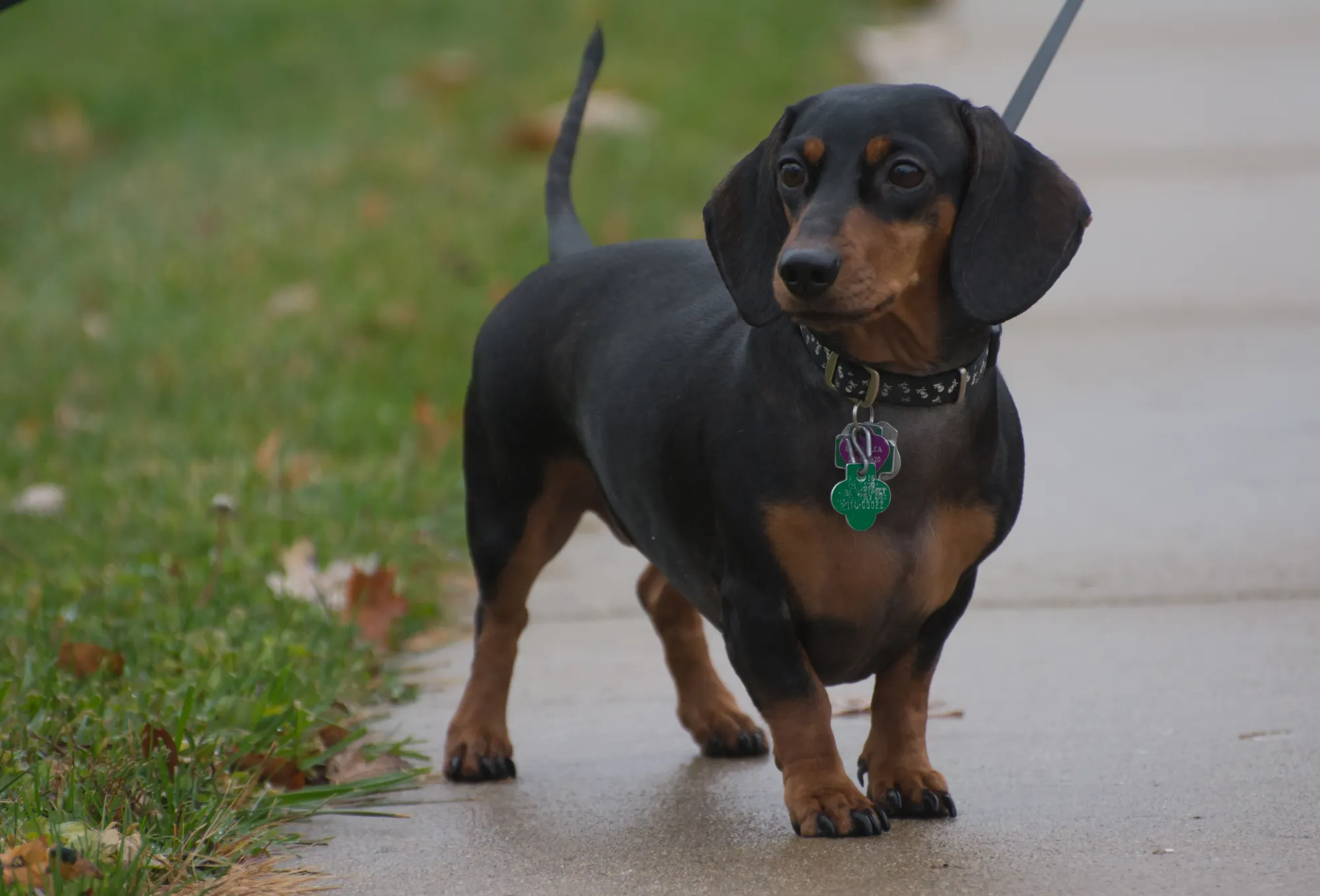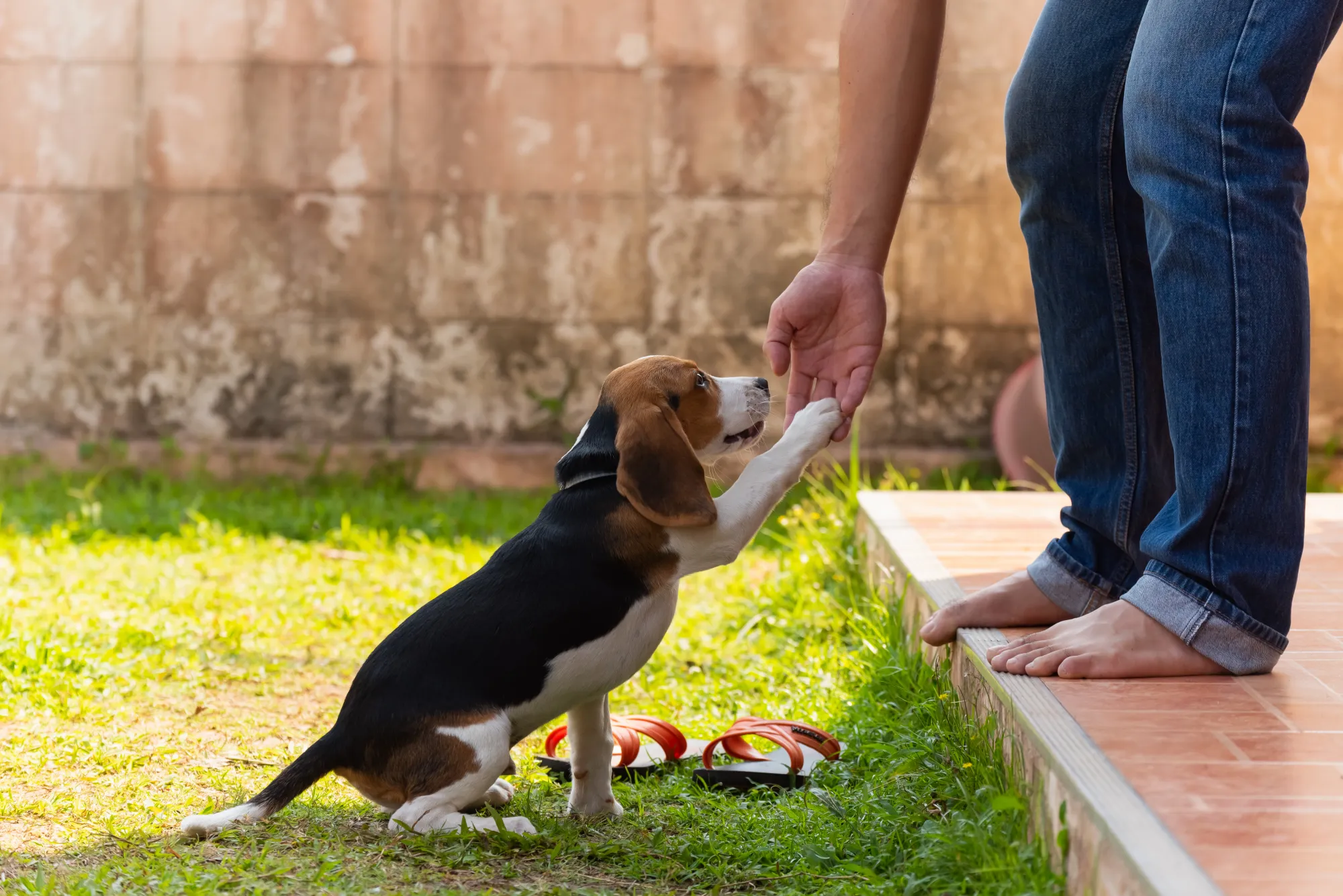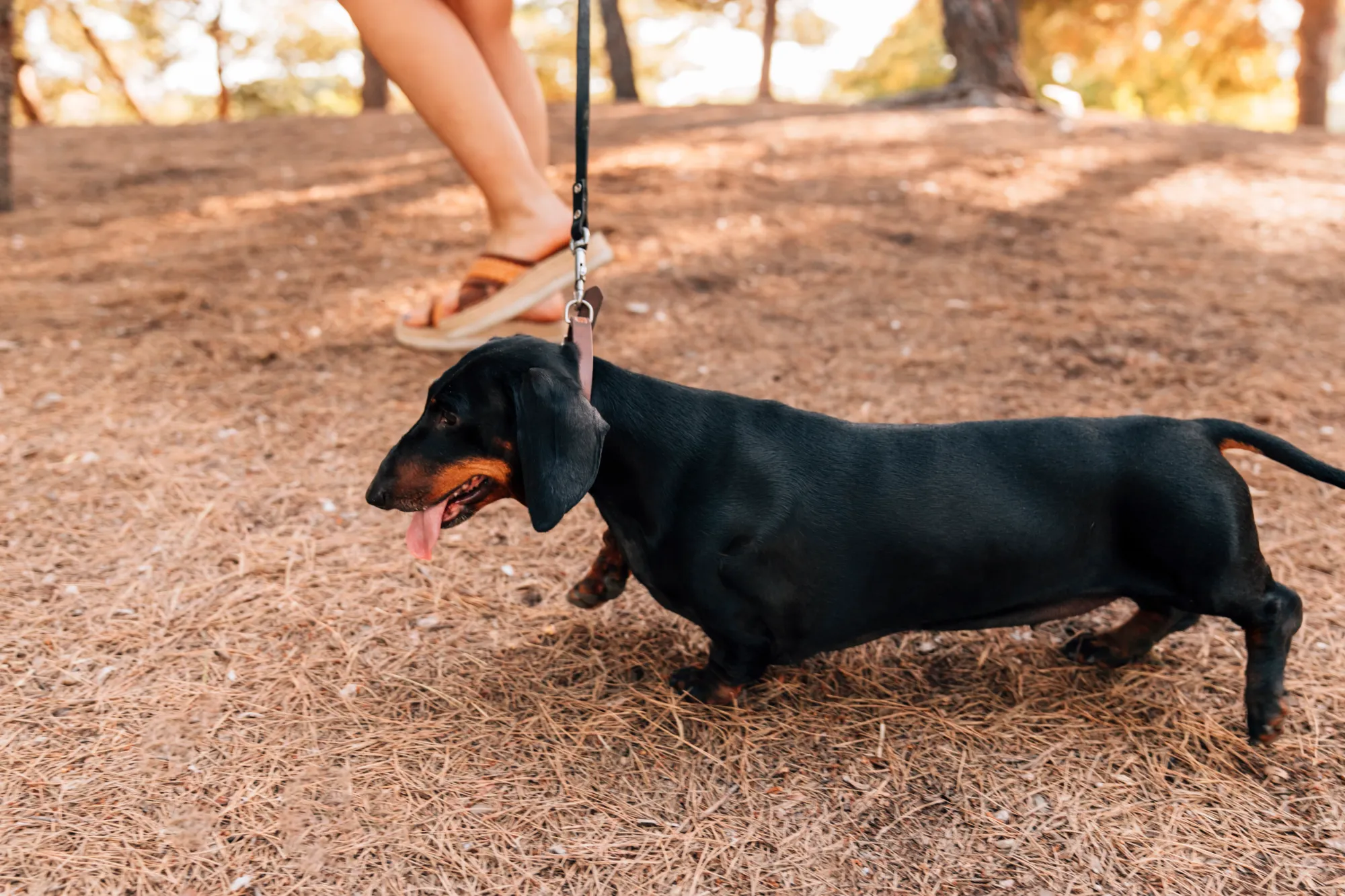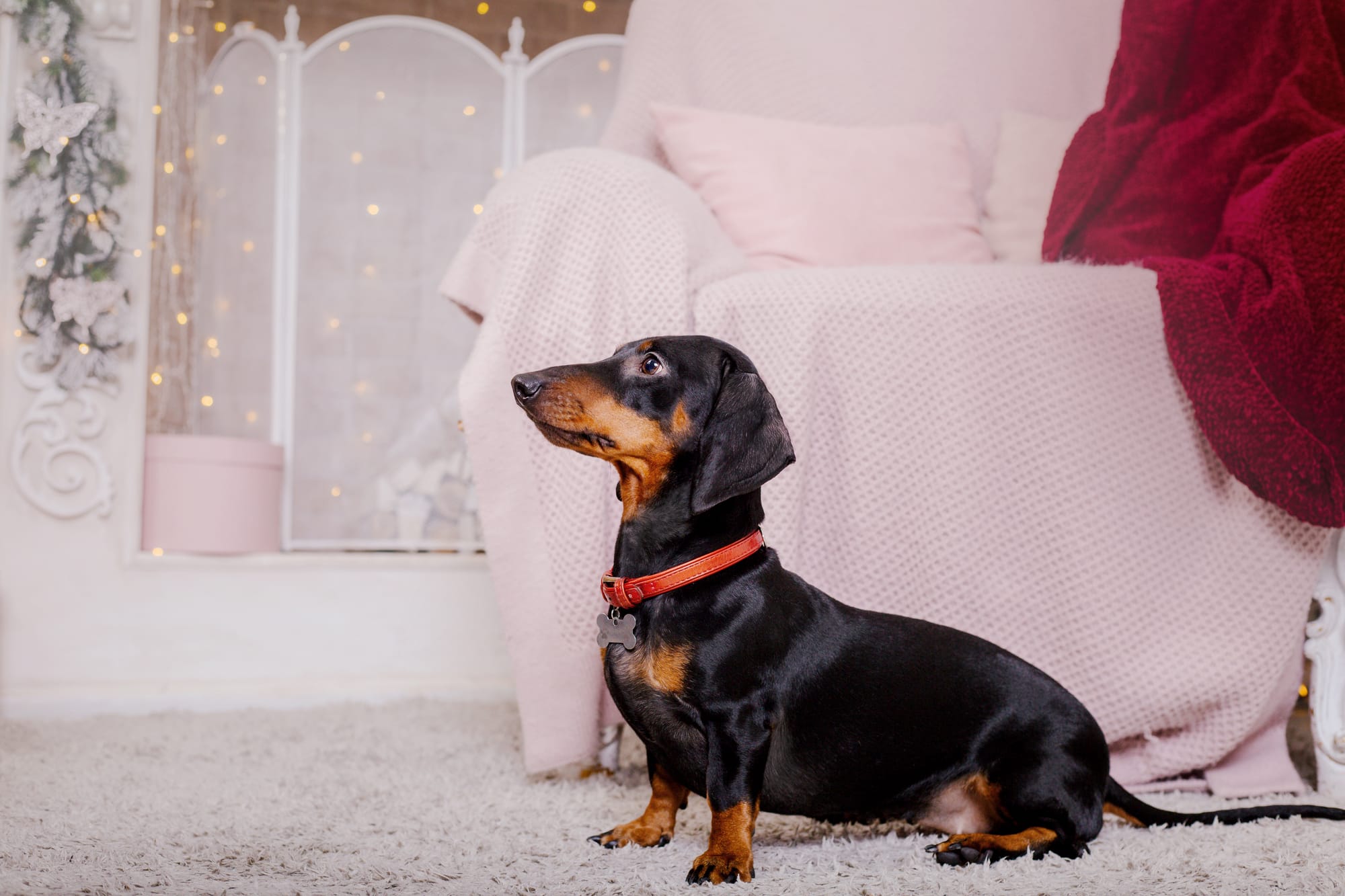Potty training a dachshund can be a challenging task, especially for first-time dog owners. However, with patience, consistency, and the right approach, it is possible to successfully potty train your furry friend. It is important to note that every dachshund is unique and may require a slightly different approach to potty training.
One of the first steps to potty training a dachshund is to establish a routine. This means taking your puppy outside to the designated potty area at regular intervals throughout the day. It is recommended to take your dachshund outside first thing in the morning, after meals, after naps, and before bedtime. Consistency is key, so try to stick to the same schedule every day.
Another important aspect of potty training a dachshund is positive reinforcement. This means rewarding your puppy for good behavior, such as going potty outside. This can be done with treats, praise, or a favorite toy. It is important to avoid punishing your dachshund for accidents, as this can lead to fear and anxiety. Instead, simply clean up the mess and continue with the potty training process.
Understanding Your Dachshund

Breed Characteristics
Dachshunds are a breed of hunting dogs that were originally bred in Germany. They have a distinctive appearance, with long bodies and short legs. Dachshunds come in three different coat types: smooth, wirehaired, and longhaired. They also come in a variety of colors, including black, tan, and red.
Dachshunds are known for their tenacity and determination, which is a trait that was bred into them for hunting purposes. They are also known for their loyalty and affection towards their owners. Dachshunds are intelligent dogs, but they can be stubborn at times, which can make training them a bit challenging.
Personality and Temperament
Dachshunds have a unique personality that sets them apart from other breeds. They are playful and energetic, but they can also be quite stubborn. Dachshunds are known for their love of digging, which can be a problem if they are left unsupervised in the yard.
Dachshunds can be good with children, but they can also be snappy if they feel threatened or provoked. They are also known to be vocal dogs, which means they may bark excessively if not trained properly.
Overall, understanding your dachshund's breed characteristics and personality is important when it comes to potty training. Dachshunds may require a bit more patience and persistence when it comes to training, but with the right approach, they can be successfully potty trained.
Preparation for Potty Training
Before starting the potty training process for your Dachshund, it is important to prepare the environment and gather the necessary supplies. This will make the process smoother and more effective.
Setting Up the Environment
Creating a designated potty area for your Dachshund is crucial for successful potty training. This can be a small fenced yard or a specific spot in your backyard. Make sure the area is easily accessible and safe for your pup. It should also be free from any distractions that may take your Dachshund's attention away from potty training.
If you live in an apartment or don't have access to a yard, consider crate training your Dachshund. A crate can serve as a designated potty area and also help with the overall potty training process.
Gathering Necessary Supplies
To make the potty training process smoother, it is important to gather the necessary supplies. These may include potty pads or puppy pads, treats, and tools such as a leash and collar.
Potty pads or puppy pads are a great option for indoor potty training. They are absorbent and can be easily disposed of. Treats are also important to reward your Dachshund for successful potty training. Make sure to choose treats that are healthy and appropriate for your pup.
Tools such as a leash and collar are important for taking your Dachshund to the designated potty area. They can also help with crate training and overall obedience training.
By setting up the environment and gathering the necessary supplies, you can ensure that the potty training process for your Dachshund is successful and stress-free.
Establishing a Routine

Establishing a routine is crucial for potty training a dachshund. The routine should include a feeding and potty schedule, consistent routine, and commands.
Feeding and Potty Schedule
Dachshunds have a small bladder and bowel, and they need to relieve themselves frequently. Therefore, it's important to establish a feeding and potty schedule. Feed your dachshund at the same time every day, and take them outside to potty immediately after eating.
It's also important to take your dachshund outside to potty first thing in the morning, before bedtime, and after naps. Consistency is key to success.
Consistent Routine and Commands
Dachshunds thrive on routine, and potty training is no exception. Establish a consistent routine for taking your dachshund outside to potty. Use the same door and the same path every time.
Consistent commands are also important. Use a simple command such as "go potty" every time you take your dachshund outside. This will help them associate the command with the action.
In summary, establishing a routine is crucial for potty training a dachshund. A feeding and potty schedule, consistent routine, and commands are important factors to consider. Consistency is key to success, and dachshunds thrive on routine.
Training Techniques
When it comes to potty training a dachshund, there are a few training techniques that can be effective. Positive reinforcement, crate training, and addressing indoor accidents are all important aspects of the training process.
Positive Reinforcement and Rewards
Positive reinforcement is a key component of potty training a dachshund. This involves rewarding your dog for good behavior, such as going potty outside. Rewards can include treats, praise, or playtime. It is important to be consistent with rewards and praise, as this will reinforce good behavior and help your dog learn faster.
Crate Training Basics
Crate training can also be an effective tool for potty training a dachshund. Dogs have a natural instinct to keep their sleeping area clean, so a crate can be used to encourage your dog to hold their bladder. Be sure to choose a crate that is the appropriate size for your dog, and never use the crate as a form of punishment. Gradually increase the amount of time your dog spends in the crate, and always reward them for going potty outside.
Addressing Indoor Accidents
Accidents are bound to happen during the potty training process, but it is important to address them in a positive and constructive manner. Clean up accidents promptly and thoroughly using a pet cleaner to eliminate any lingering odors. Avoid scolding or punishing your dog for accidents, as this can create anxiety and make the training process more difficult.
By using a combination of positive reinforcement, crate training, and addressing indoor accidents, you can effectively potty train your dachshund. Remember to be patient and consistent, and always reward good behavior.
Recognizing and Interpreting Signs

When it comes to potty training a dachshund, recognizing and interpreting signs is crucial. In this section, we will discuss the signs that your dachshund needs to potty and how to respond to barking and whining.
Signs That Your Dachshund Needs to Potty
Dachshunds, like most dogs, have their own way of communicating when they need to go potty. Here are some signs to look out for:
- Sniffing around: Dachshunds have a keen sense of smell, and they will often sniff around when they need to go potty.
- Pacing: If your dachshund is pacing around the room, it could be a sign that they need to go outside.
- Scratching at the door: If your dachshund is scratching at the door, it could be a sign that they need to go outside to potty.
- Whining or barking: Dachshunds may whine or bark to get your attention when they need to go outside.
By paying attention to these signs, you can take your dachshund outside before they have an accident in the house.
Responding to Barking and Whining
If your dachshund is barking or whining to get your attention, it's important to respond appropriately. Here are some tips:
- Stay calm: It's important to remain calm and patient with your dachshund. Yelling or getting upset will only make the situation worse.
- Take them outside: When your dachshund barks or whines, take them outside immediately. This will reinforce the idea that barking or whining means it's time to go potty.
- Reward good behavior: When your dachshund goes potty outside, be sure to reward them with praise and/or treats. This will reinforce the idea that going potty outside is a good thing.
By responding appropriately to your dachshund's barking and whining, you can help them learn to communicate their needs effectively and avoid accidents in the house.
Overcoming Common Challenges
Potty training a dachshund can be a challenging task, but with patience and persistence, it can be done successfully. Here are some common challenges that dachshund owners may face during the potty training process, and how to overcome them.
Dealing with Stubbornness
Dachshunds are known for their stubbornness, which can make potty training more difficult. It is important to establish a routine and stick to it, as this will help your dachshund understand when it is time to go outside. Consistency is key when it comes to potty training, so try to take your dachshund outside at the same time every day.
If your dachshund is being particularly stubborn, try using positive reinforcement. Reward your dachshund with treats and praise when they go potty outside, and ignore any accidents that happen inside. This will help your dachshund understand that going potty outside is a good thing, and will encourage them to continue doing so.
Managing Small Bladder Size
Dachshunds have small bladders, which means they may need to go outside more frequently than other breeds. This can make potty training more challenging, as accidents may happen more frequently.
To manage your dachshund's small bladder size, try taking them outside more frequently. If you notice your dachshund sniffing around or circling, this may be a sign that they need to go potty. Take them outside immediately to prevent any accidents from happening inside.
Training in Bad Weather
Training a dachshund to go potty outside in bad weather can be challenging, but it is important to continue the training process even when the weather is not ideal. Invest in a raincoat or umbrella to keep yourself and your dachshund dry, and try to make the experience as positive as possible.
If your dachshund is hesitant to go outside in bad weather, try using positive reinforcement. Reward them with treats and praise when they go potty outside, and make the experience as comfortable as possible. This will help your dachshund understand that going potty outside is a good thing, even in bad weather.
Overall, potty training a dachshund can be a challenging process, but with patience and persistence, it can be done successfully. By following a routine, using positive reinforcement, and managing your dachshund's small bladder size, you can help your dachshund become fully potty trained.
Advanced Potty Training Tips

Transitioning Outside
Once your dachshund has mastered potty training indoors, it's time to transition to going outside. Start by taking your dog outside on a leash to a designated potty area. Use a command such as "go potty" to encourage your dog to go. If your dog does not go within a few minutes, take them back inside and try again later. Gradually increase the amount of time your dog spends outside until they are comfortable going potty outside without a leash.
Reducing Reliance on Potty Pads
While potty pads can be useful during the initial stages of potty training, it's important to reduce your dog's reliance on them. Start by moving the potty pad closer to the designated potty area outside. Encourage your dog to use the potty pad less frequently by taking them outside more often. Gradually reduce the number of potty pads in your home until your dog is fully trained to go outside.
Remember, success in potty training a dachshund requires patience, consistency, and positive reinforcement. By following these advanced potty training tips, you can help your dachshund become fully trained to go potty outside and reduce their reliance on potty pads.
Maintaining Potty Training Success
After successfully potty training a dachshund, it's important to maintain the good habits to prevent any regression. Here are some tips on how to maintain potty training success.
Reinforcing Good Habits
To reinforce good habits, it's important to continue with the routine that was established during the potty training process. This includes taking the dachshund outside at regular intervals, such as after meals and naps, and giving them plenty of praise and treats when they go potty outside. Consistency is key to maintaining good habits.
It's also important to keep an eye on the dachshund and watch for any signs that they need to go potty. If they start sniffing around or circling, it's a good indication that they need to go outside. By catching these signs early, accidents in the house can be prevented.
Handling Regression
If a dachshund starts having accidents in the house after being potty trained, it's important to address the issue right away. One common cause of regression is a change in routine or environment. For example, if the dachshund's owner starts working longer hours and is unable to take them outside as often, accidents may occur.
Positive reinforcement is also important when handling regression. Instead of scolding the dachshund for having accidents, it's important to remain neutral and redirect their behavior by taking them outside immediately after the accident and giving them praise and treats when they go potty outside.
In summary, maintaining potty training success requires consistency, positive reinforcement, and keeping an eye on the dachshund for any signs that they need to go potty. By following these tips, accidents in the house can be prevented and good habits can be reinforced.

Special Considerations
When it comes to potty training a dachshund, there are a few special considerations to keep in mind. These considerations include training an older dachshund and adapting to lifestyle changes.
Training an Older Dachshund
Training an older dachshund can be a bit more challenging than training a puppy. Older dogs may have established potty habits that are difficult to break. It is important to be patient and consistent when training an older dog.
One approach is to use positive reinforcement training, which involves rewarding good behavior and ignoring bad behavior. This can include giving treats, praise, and attention when the dog goes potty outside. It is also important to establish a routine and stick to it. This can help older dogs understand when it is time to go potty.
Adapting to Lifestyle Changes
Dachshunds, like all dogs, may need to adapt to lifestyle changes such as moving to a new home or having a new family member. These changes can disrupt a dog's potty habits, so it is important to be patient and provide guidance during the transition.
One way to help a dachshund adapt to lifestyle changes is to establish a routine as quickly as possible. This can include taking the dog outside at the same times every day and providing plenty of opportunities for potty breaks. It is also important to provide plenty of positive reinforcement and praise when the dog goes potty outside.
Overall, potty training a dachshund requires patience, consistency, and guidance. With the right approach, it is possible to establish good potty habits and maintain them over time.
Conclusion
In conclusion, potty training a dachshund, while challenging, is entirely achievable with the right strategies and mindset. Understanding the unique characteristics and temperament of dachshunds is crucial in tailoring a training approach that works for both the pet and the owner. Establishing a routine, utilizing positive reinforcement, and being patient during the process are key elements to success.
Addressing accidents with a constructive attitude and adapting training techniques to meet the individual needs of your dachshund will lead to a well-trained companion. Remember, consistency and perseverance are vital, as is adapting to any lifestyle changes that may occur. With these considerations in mind, owners can foster a positive potty training experience, ensuring a happy, healthy relationship with their dachshund.
FAQs
- What is the best way to start potty training a dachshund?
- Begin by establishing a consistent routine, taking your dachshund outside to a designated potty area at regular intervals, especially after meals, naps, and first thing in the morning and before bedtime.
- How do I deal with accidents during potty training?
- Clean up accidents promptly without punishing your dachshund. Instead, focus on positive reinforcement for successful outdoor potty trips to encourage good behavior.
- Can dachshunds be crate trained for potty training purposes?
- Yes, crate training can be an effective method for potty training dachshunds, as it utilizes their natural instinct to keep their sleeping area clean.
- How can I address my dachshund's stubbornness during potty training?
- Stay consistent with your routine and use positive reinforcement, such as treats and praise, to encourage desired behaviors. Patience and consistency are key.
- What supplies do I need for potty training my dachshund?
- Essential supplies include potty pads (for indoor training), treats for rewards, and a leash and collar for outdoor potty trips.
- How often should I take my dachshund outside for potty breaks?
- Dachshunds need frequent potty breaks due to their small bladders. Take them outside first thing in the morning, after meals, after naps, and before bedtime, adjusting as needed based on their individual needs.
- What should I do if my dachshund has an accident indoors?
- Clean the area thoroughly with a pet-friendly cleaner to remove any scent. Avoid punishment and instead focus on reinforcing positive behavior.
- How do I transition my dachshund from potty pads to going outside?
- Gradually move the potty pad closer to the outside door and reduce its use as you increase outdoor potty trips. Use commands and rewards to encourage outdoor potty behavior.
- Can older dachshunds be potty trained?
- Yes, older dachshunds can be potty trained with patience and consistency. Adjust your approach based on their learning speed and prior habits.
- How can I maintain my dachshund's potty training success long-term?
- Continue reinforcing good habits with consistent routines and positive reinforcement. Be vigilant for signs that they need to go and adapt to any changes in your dachshund's environment or schedule to prevent regression.




